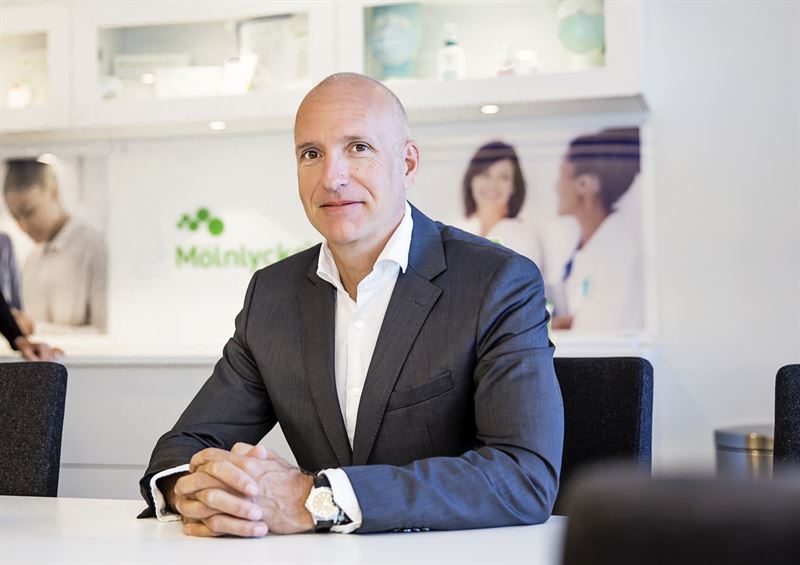Mölnlycke calls for stricter regulation of wound care products and solutions

Chronic wounds, such as foot ulcers, have a higher mortality rate than both breast cancer and prostate cancer[1]. Despite US alone spending USD 25 billion[2]annually related to chronic wounds, the real burden in terms of patient suffering and economic cost of ulcers is not recognised. Mölnlycke today presents its agenda for tackling this unrecognised societal problem.
Richard Twomey, CEO of Mölnlycke, comments:
“The unnecessary patient suffering and mortality as well as the economic burden on society because of pressure ulcers and other chronic and acute wounds are unacceptable. The first step of remedy starts with recognition; policy makers, regulators and our industry must work closer together, collaborating in raising awareness around the magnitude of the problem and the solutions at hand. The second step is that we as an industry must act responsibly to gain credibility and trust. The market practices that allow extrapolation of evidence from one specific product to another similar type of product, even though the latter is not equivalent in material construction and design to the former, can put patients at risk. It’s time for tougher demands on clinical evidence and stricter rules on how to use different scientific studies on specific products.”
Ulcer complications are a mounting issue for the health care systems. Individuals with diabetes, one of the fastest growing health threats of our time, have a 25 percent lifetime risk of developing a foot ulcer[i]. These wounds can go from uninfected to life-threatening within a week[3].
Richard Twomey continues:
“The clinical effectiveness of all drugs, including insulin, have to be thoroughly tested before they are licensed and available for patients, whereas dressings are not subject to the same level of testing. Where the active component in a drug is made of a specific chemical composition, with a formula that is exclusive and chemically defined for achieving a certain clinical effect, medical devices may use diverse design principles and variations and still claim the same effect.This system is not sustainable and can put patients at risk.”
According to a new paper[ii]published in Wounds International by Amit Gefen, Nick Santamaria, Sue Creehan and Joyce Black, extrapolation of bioengineering and clinical evidence obtained from one prophylactic dressing to other dressings manufactured by different manufacturers can compromise patient safety.
Professor Amit Gefen comments:
“Compared with the rigorous and thorough processes in place within the pharmaceutical industry for extrapolation of clinical evidence of efficacy from one product to another, parts of the medical devices industry is operating in a grey zone. These differences in regulation very likely originate from the simple fact that there is only one possible way of producing a drug — based on its chemical formula, but probably infinite ways for engineering design of a device. As a result, in the medical device industry, it is far more difficult to determine whether similar products, or products that make the same claims of a clinical effect, or lookalike products, are actually equivalent in effectiveness. This places undue responsibility on clinicians when interpreting marketing materials.”
The authors recommend that in light of current regulations and limitations within the wound care industry, clinicians should be guided by high quality clinical evidence relating to the specific dressing in question when choosing a prophylactic dressing for pressure ulcer prevention.
About the authors
Amit Gefenis Professor of Biomedical Engineering and the Herbert J. Berman Chair in Vascular Bioengineering, Department of Biomedical Engineering, Faculty of Engineering, Tel Aviv University, Tel Aviv, Israel.
Nick Santamaria is Professor of Nursing Research, University of Melbourne, Australia;
Sue Creehanis Wound Care Team Program Manager, VCU Health System, Richmond, Virginia, USA.
Joyce Blackis Professor of Nursing, University of Nebraska Medical Center, Omaha, Nebraska, USA.
The full paper can be found here.
[1]Armstrong et al, “Are diabetes-related wounds and amputations worse than cancer?”, Int Wound J. 2007 Dec;4(4):286-7.
[2]Gefen et al, “Extrapolation of evidence-related to dressings for pressure ulcer prevention may compromise patient safety”, Wounds International 2018, Vol 9 Issue 2
[3]http://www.diabetesadvice.co.uk/care-and-medication/small-wounds-can-cause-death-in-diabetes-patients
For more information, please contact:
Jenny Johansson, Global Communications Manager
jenny.johansson@molnlycke.com
Phone: +46 (0) 739 41 29 23
About Mölnlycke
Mölnlycke is a world-leading medical solutions company. We design and supply solutions to enhance performance at every point of care – from the hospital to the home. We specialise in solutions for managing wounds, improving surgical safety and efficiency, and preventing pressure ulcers. Our products are available in approximately 100 countries worldwide. Mölnlycke was founded in 1849. Our headquarters are in Gothenburg, Sweden and we employ around 7,500 people. Since 2007, we belong to Investor AB, the leading owner of Nordic-based international companies.


